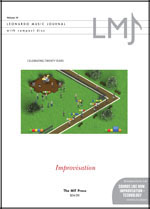Computer art is any art in which computers play a role in production or display of the artwork. Such art can be an image, sound, animation, video, CD-ROM, DVD-ROM, video game, website, algorithm, performance or gallery installation. Many traditional disciplines are now integrating digital technologies and, as a result, the lines between traditional works of art and new media works created using computers has been blurred. For instance, an artist may combine traditional painting with algorithm art and other digital techniques. As a result, defining computer art by its end product can thus be difficult. Computer art is bound to change over time since changes in technology and software directly affect what is possible.
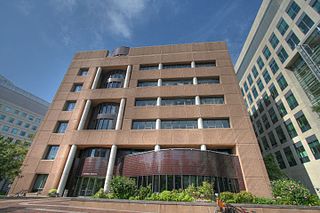
Whitehead Institute for Biomedical Research is a non-profit research institute located in Cambridge, Massachusetts, United States that is dedicated to improving human health through basic biomedical research. It was founded as a fiscally independent entity from the Massachusetts Institute of Technology (MIT), where its 19 members all hold faculty appointments in the MIT Department of Biology or the MIT Department of Bioengineering. As of 2023, Ruth Lehmann is its director; she succeeded David C. Page.
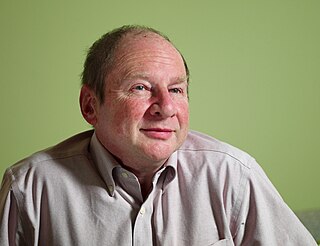
Harold Abelson is a Professor of Computer Science and Engineering in the Department of Electrical Engineering and Computer Science at the Massachusetts Institute of Technology (MIT), a founding director of both Creative Commons and the Free Software Foundation, creator of the MIT App Inventor platform, and co-author of the widely-used textbook Structure and Interpretation of Computer Programs, sometimes also referred to as "the wizard book."

The MIT Media Lab is a research laboratory at the Massachusetts Institute of Technology, growing out of MIT's Architecture Machine Group in the School of Architecture. Its research does not restrict to fixed academic disciplines, but draws from technology, media, science, art, and design. As of 2014, Media lab's research groups include neurobiology, biologically inspired fabrication, socially engaging robots, emotive computing, bionics, and hyperinstruments.

The MIT Lincoln Laboratory, located in Lexington, Massachusetts, is a United States Department of Defense federally funded research and development center chartered to apply advanced technology to problems of national security. Research and development activities focus on long-term technology development as well as rapid system prototyping and demonstration. Its core competencies are in sensors, integrated sensing, signal processing for information extraction, decision-making support, and communications. These efforts are aligned within ten mission areas. The laboratory also maintains several field sites around the world.

The MIT Press is a university press affiliated with the Massachusetts Institute of Technology (MIT) in Cambridge, Massachusetts. The Press has been a pioneer in the Open Access movement in academic publishing and publishes a number of academic journals. The organization also operates the MIT Press Bookstore, which is one of the few retail bookstores run by a university publisher.

Neil Adam Gershenfeld is an American professor at MIT and the director of MIT's Center for Bits and Atoms, a sister lab to the MIT Media Lab. His research studies are predominantly focused in interdisciplinary studies involving physics and computer science, in such fields as quantum computing, nanotechnology, and personal fabrication. He is a Fellow of the American Physical Society. Scientific American has named Gershenfeld one of their "Scientific American 50" for 2004 and has also named him Communications Research Leader of the Year. Gershenfeld is also known for releasing the Great Invention Kit in 2008, a construction set that users can manipulate to create various objects.

MIT Technology Review is a bimonthly magazine wholly owned by the Massachusetts Institute of Technology, and editorially independent of the university. It was founded in 1899 as The Technology Review, and was re-launched without The in its name on April 23, 1998, under then publisher R. Bruce Journey. In September 2005, it was changed, under its then editor-in-chief and publisher, Jason Pontin, to a form resembling the historical magazine.
George Gessert is one of the best-known artists in the contemporary art movement known as bio-art a/k/a BioArt. Gessert began his career as a painter and printmaker, and began breeding plants as an art form in the late 1970s. Beginning in the 1980s, Gessert's work focused on the overlap between art and genetics, and he has exhibited a series of installations of hybrids and documentation of breeding projects.
Simon Graeme Penny is an Australian artist, theorist, curator and teacher in the fields of digital cultural practices, embodied interaction and interactive art.

Mary Flanagan is an American artist, author, educator, and designer. She pioneered the field of game research with her ideas on critical play and has written several books. She is the founding director of the research laboratory and design studio Tiltfactor Lab and the CEO of the board game company Resonym. Flanagan's work as an artist has been shown around the world and won the Award of Distinction at Prix Ars Electronica in 2018.
The MIT School of Humanities, Arts, and Social Sciences (SHASS) is one of the five schools of the Massachusetts Institute of Technology, located in Cambridge, Massachusetts, US. The school includes 11 academic areas and works alongside six departments, labs, and programs. SHASS grants SB, SM, and PhD degrees. Major fields of study include anthropology, comparative media studies and writing, economics, history, linguistics, literature, music, philosophy, political science, science, technology, and society, and theater arts. Other programs include the Center for International Studies; Knight Science Journalism; Science, Technology, and Society; Security Studies; and HyperStudio.

Mel Alexenberg is an American-Israeli artist, art educator, and writer recognized for his pioneering work exploring the intersections of art, science, technology and digital culture. He created the first digital computer generated painting in 1965, experimental digital fine art prints in the 1980s that are in 30 museum collections worldwide, circumglobal cyberangel flights honoring Rembrandt in 1989 and in 2019.
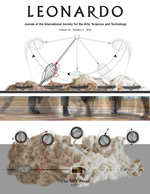
Leonardo is a peer-reviewed academic journal published by the MIT Press covering the application of contemporary science and technology to the arts and music.
Judy Malloy is an American poet whose works embrace the intersection of hypernarrative, magic realism, and information art. Beginning with Uncle Roger in 1986, Malloy has composed works in both new media literature and hypertext fiction. She was an early creator of online interactive and collaborative fiction on The WELL and the website ArtsWire.

The journal Studies in Applied Mathematics is published by Wiley–Blackwell on behalf of the Massachusetts Institute of Technology.

New media art includes artworks designed and produced by means of electronic media technologies. It comprises virtual art, computer graphics, computer animation, digital art, interactive art, sound art, Internet art, video games, robotics, 3D printing, immersive installation and cyborg art. The term defines itself by the thereby created artwork, which differentiates itself from that deriving from conventional visual arts such as architecture, painting or sculpture.

Roger Malina is an American physicist, astronomer, Executive Editor of Leonardo Publications by Leonardo, the International Society of Arts, Sciences and Technology and distinguished professor of arts and technology, and professor of physics at the University of Texas at Dallas.
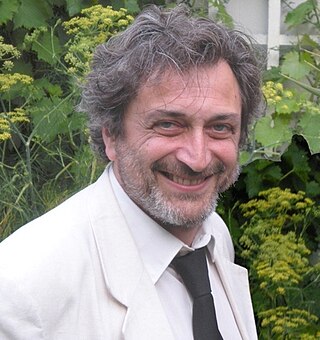
Pier Luigi Capucci is an Italian educator, theorist and writer in the fields of media and of the relationships among culture, sciences and technologies, as well as an active contributor to the international debate about culture-sciences-technologies-arts.
Leonardo, The International Society for the Arts, Sciences and Technology (Leonardo/ISAST) is a registered 501(c)(3) nonprofit formed in 1982 as an umbrella organization for the journals Leonardo and the Leonardo Music Journal. In 2018, Leonardo/ISAST was awarded the Golden Nica Prix Ars Electronica as Visionary Pioneers of New Media Art.
